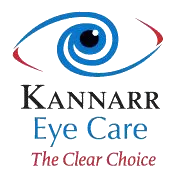Glaucoma is a condition characterized by excessive pressure in the eye, or intraocular pressure. This irregularly high pressure is due to a buildup of fluid in the eye. As intraocular pressure increases, it can compress the eye’s optic nerve, eventually leading to vision loss. Around 3 million people
Read more-
What is Glaucoma
Category: We Can Help With, Glaucoma
-
iStent
Category: We Can Help With, Glaucoma
The iStent Trabecular Micro-Bypass is a surgical device that is available for use in treating patients with mild-to-moderate open-angle glaucoma. Glaucoma is characterized by an excessive accumulation of fluid inside the eye, which leads to an increase in the inner eye pressure (intraocular pressure).
Read more -
Keratoconus
Category: We Can Help With, Corneal Disorders, Disorders
While keratoconus can happen at any stage of life, young people between the ages of 10 and 25 are most likely to develop this disorder. For individuals with keratoconus, their cornea, the clear layer in the front of your eye, gradually thins and begins to bulge outward. Keratoconus typically causes nearsightedness
Read more -
Viruses
Category: We Can Help With, Corneal Disorders, Disorders
Herpes Zoster (Shingles) If you ever had chickenpox, you’re at higher risk of developing shingles later in life. Shingles can affect many parts of the body. If it travels to your eyes, your cornea can become inflamed and even scarred. Corneal damage might not be apparent until months after the shingles
Read more -
Corneal Dystrophies
Category: We Can Help With, Corneal Disorders, Disorders
This group of corneal disorders includes more than 20 variations. Each affects different parts of the cornea, causing it to get cloudy and compromising vision. Most of these dystrophies are inherited, affect both eyes equally and spread between layers of the cornea as they gradually progress.
Read more -
Pterygium
Category: We Can Help With, Corneal Disorders, Disorders
Pterygium is characterized by a pink tissue growth on the sclera (the white part of the eye), which seems to be the result of chronic exposure to ultraviolet light. In fact, because many surfers suffer from pterygium, the condition is often called surfer’s eye. Pterygium is not cancerous and may continue
Read more -
Stevens-Johnson Syndrome
Category: We Can Help With, Corneal Disorders, Disorders
This skin disorder, also called erythema multiforme major, sometimes causes painful lesions on the eyelids. Stevens-Johnson syndrome can cause painful corneal blisters and even holes, leading to vision loss.
Read more -
Iridocorneal Endothelial Syndrome
Category: We Can Help With, Corneal Disorders, Disorders
This syndrome most commonly affects women between 30 and 50 years old. Symptoms include changes to the iris, corneal swelling and the onset of glaucoma.
Read more -
Intraocular Lenses
Category: We Can Help With, Cataracts
If your vision is blurred due to cataracts and you are pursuing surgical intervention to correct the problem, you are likely considering which intraocular lens (IOL) to choose, to restore your vision after cataract surgery. There are a variety of IOL options to choose from. Your ophthalmologist can help
Read more -
Strabismus Causes and Treatment
Category: We Can Help With, Adult Strabismus
In order for your eyes to focus normally, six muscles around each eye must work together. When your two eyes see different images, your brain tends to favor the stronger eye. This means the weak eye gets weaker, resulting in amblyopia, or “lazy eye.” Risk factors for developing strabismus may include
Read more -
Post-Concussive Vision Syndrome
Category: Visual Rehabilitation
More than 300,000 sports-related concussions occur each year, according to research. Many more concussions result from motor vehicle accidents, falls, and other non-sports related incidents. In addition to causing cognitive difficulties, concussions may result in a cluster of problems called post-concussive
Read more -
Special Needs
Category: Visual Rehabilitation
The cognitive differences of special needs children and adults are well-documented, but vision issues often receive less attention. People with special needs have the same range of vision issues as their neurotypical counterparts; however, these vision problems occur at a much higher rate in special
Read more -
Traumatic Injury
Category: Visual Rehabilitation
Accurate vision involves much more than good eye health. The brain integrates signals from the eyes with information from the motor, balance, and auditory systems to create an accurate view of the world. Following traumatic injury, one or more components of this complex system may be damaged. Receiving
Read more -
Balance Board
Category: Vision Therapy Programs
The brain and the eyes work together to create a visual experience. On one hand, the eyes send signals to the brain, which allows it to translate that data into visuals; on the other, the brain sends signals to the muscles attached to each eye, controlling their movements. If anything disrupts these
Read more -
Corrective Lenses
Category: Vision Therapy Programs
Corrective lenses are used to correct deviations, adjust focal points or neutralize other anomalies that impact the eyes’ ability to focus an image on the retina. To do this, the lenses must be the correct type and of the right power. Strength – which is expressed as diopeters – relies on the material
Read more -
Training Devices
Category: Vision Therapy Programs
Visual-motor-sensory integration training uses various devices to appeal to a person’s senses, including touch, sound and smell. This type of therapy is particularly useful in children with autism. Devices may include play dough, rubber toys, weighted bells and blankets, water, rice, sand, beans, musical
Read more
